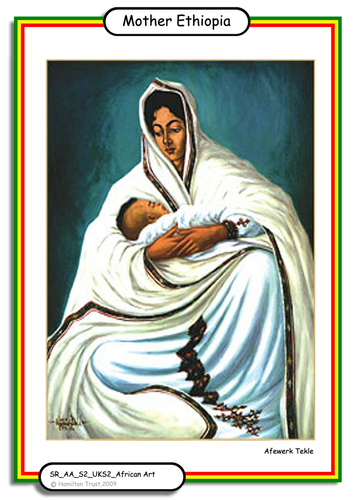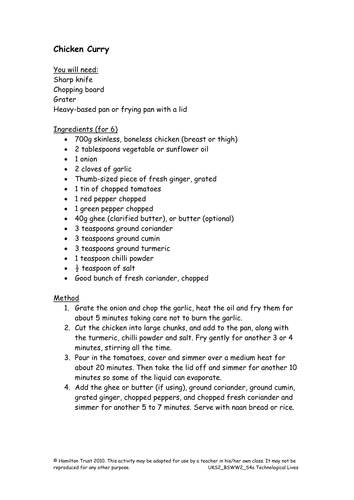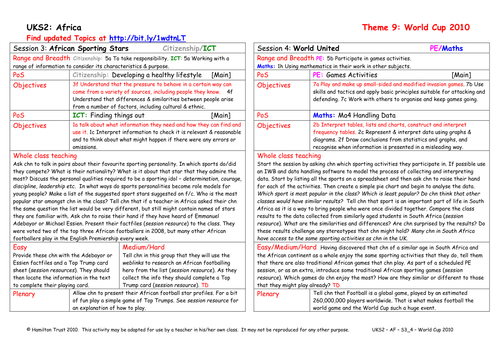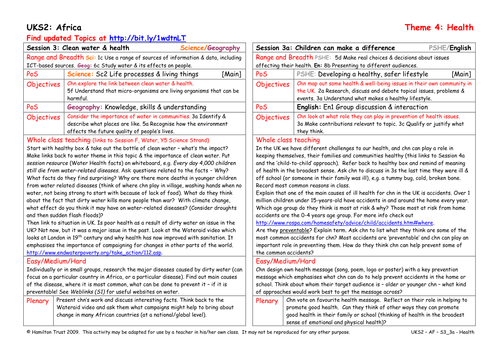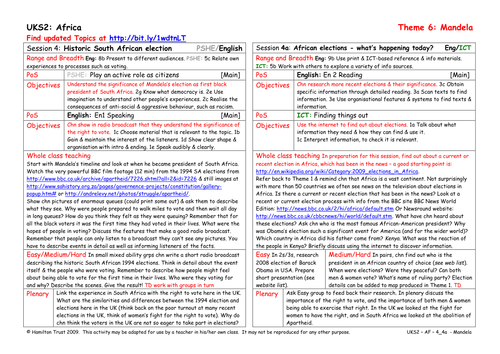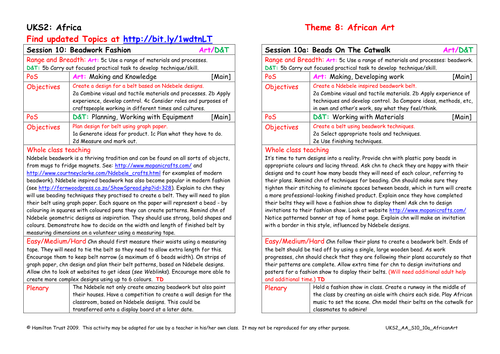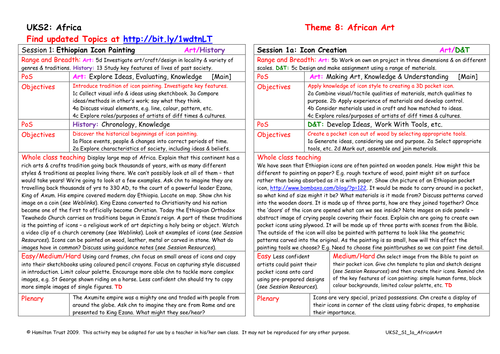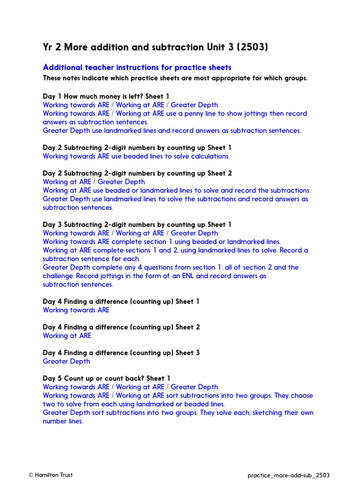
397Uploads
10041k+Views
11644k+Downloads
All resources

Olympic Games: an African Aim
The host of the 2020 Olympic games will be …? The groups present their Olympic bids before the winner is announced. The real decision won’t be made until 2011, but will Africa be awarded the games for the first time?

Afewerk Tekle
It’s time to come up to date and look at work of a modern Ethiopian painter: Afewerk Tekle.
Children use websites to find out how his work has been influenced by the tradition of icon painting.

Modern Day Meals
Children discuss their favourite meals, made a model/drawing of it as session 4. One group prepares a chicken curry. All taste this and vote for either the 1950s chicken meal or the modern day curry.

London Olympics 1948
The second London Games were held in 1948. Again London only had 2 years to organise the games as they were awarded in 1946 after the 1944 Games were cancelled due to WWII. Children research facts and the legacy to be added to the timeline.

Mental Oral Starters :Y3 Aut Sequence 3
Mental and oral starters for Year 3 Autumn Teaching Sequence 3.

Mini World Cup
Is your school ready for kick off? In this session you help the children plan a mini world cup for your school. How can you get other children involved? Who will take responsibility for each aspect of the mini tournament?

Ethiopian Inspiration
Think big and create a class mural based on the work of Afewerk Tekle.
Children work collaboratively to plan and paint a mural with a biblical subject in the same style as Tekle.

Building a Sporting Future for Africa
In this session children take a look at successful Olympic bids from London and Rio before starting to put together their own 2020 bid on behalf of one of the World Cup host cities.

London Olympics 1908
Remind children that London has held the Olympics twice before. The first time was in 1908. Find out why London had only two years to prepare and research facts about the Games and the legacy left by London 1908.

Revise fractions; find unit and non-unit fractions of amounts - Teaching Presentation - Year 4
This presentation provides three days of teaching that cover the objectives:
Count in 1⁄4s, 1⁄3s, 1⁄8s and 1⁄10s saying equivalent fractions.
Find unit and non-unit fractions of amounts.
It includes starter activities, whole class teaching, group activities, practice sheets and mastery questions. It can be used on a variety of interactive whiteboards.
Day 1
Count in thirds along a 0-5 line marked in thirds. Point at a mark; children write the number. Repeat with a line showing 1/4s. Stress mixed numbers, e.g.one and three quarters; equivalence, e.g. one and a half is the same as one and two quarters. Repeat for tenths.
Day 2
– Use a picture of a chocolate bar with 30 pieces to show how to find 1/5, 3/5, and 4/5 of 30, then 1/6 of 30 and 5/6 of 30. Repeat with 50 pieces to find 1/10 and subsequent non-unit fractions, e.g. 3/10.
Day 3
Sketch a pizza and divide it into eight equal sections. If 16 bits of salami are distributed equally, how much on each slice? Show that 1/8 of 16 is 2 (16 ÷ 8); then derive other facts: 2/8 of 16 = 4, 3/8 of 16 = 6, etc. Show that 4/8 is 1/2. Demonstrate using a bar model and repeat with 24 pieces of tomato.
This teaching is part of Hamilton’s Year 4 Decimals and Fractions block. Each Hamilton maths block contains a complete set of planning and resources to teach a term’s worth of objectives for one of the National Curriculum for England’s maths areas.

World United
260 million people can’t be wrong! In this session children discover that there are few differences between the sports they like and participate in and those that children in Africa enjoy, before experiencing some traditional African games.

African Sporting Stars
Who is your sporting hero? Children consider who their sporting heroes are, what makes them great and introduces the idea of sportspeople as role models. Children then investigate some African football idols for a game of top trumps.

Children can make a difference
Children research what are key health issues for their own class. Focus on accidents and how they can be prevented. Understand concept of preventable and how children can play an important role in prevention
Suitable for years 5 and 6.

Historic South African election
Black Africans were very eager to vote in the 1994 South African election. Discuss the significance of Mandela’s election as the first black president in South Africa. Use historic film footage to show queues of voters and reactions to the election.
Suitable for years 5 and 6.

Beadwork Fashion
Ndebele beadwork is a thriving tradition and can be found on all sorts of modern items. Children explore how it has been used in fashion and design simple belts based on the geometric designs of the Ndebele people

Icon Creation
Create an Ethiopian pocket icon. Children explore techniques of painting on wood and create their own icon images based on their studies.

Problem-Solving Investigation: Decimal and money calculation. (Year 5 Addition and Subtraction)
Year 5 Addition and Subtraction: Decimal and money calculation.
This in-depth Maths Investigation will develop maths meta-skills, and enable children to learn to think mathematically and articulate mathematical ideas.
In-depth Investigation: Adding Odd and Even Amounts
Children create two amounts of money – one with even digits, one with odd digits – and add these. They look for patterns of even/odd in the totals.
This problem-solving investigation is part of our Year 5 Addition and Subtraction block. Each Hamilton maths block contains a complete set of planning and resources to teach a terms worth of objectives for one of the National Curriculum for England’s maths areas.

Practice Worksheets: Subtract by counting up. ( Year 2 More Addition and Subtraction )
Year 2 More Addition and Subtraction: Subtract 2-digit numbers by counting up; choose a strategy.
Procedural fluency practice worksheets to achieve maths mastery. Differentiated for children working towards Age Related Expectations (ARE), at ARE and at greater depth.
Day 1 - Find how much money is left over when children buy a drink by finding the difference.
Day 2 - Use Frog (counting up) to solve subtractions.
Day 3 - Subtract 2-digit numbers by counting up.
Day 4 - Use number lines to find the difference by counting up.
Day 5 - Choose an efficient strategy to solve subtractions.
These procedural fluency practice sheets are part of our Year 2 More Addition and Subtraction block. Each Hamilton maths block contains a complete set of planning and resources to teach a terms worth of objectives for one of the National Curriculum for England’s maths areas.

Subtraction with decimals, e.g. money - Problem-Solving Investigation - Year 5
This in-depth maths investigation is an open-ended problem solving activity for Year 5 children. It can be used to support teaching towards the objective subtraction with decimals including money.
In-depth Investigation: Decimal Differences
Children subtract pairs of numbers with consecutive digits and different numbers of decimal places, and look for patterns in their answers.
This investigation will develop maths meta-skills, support open-ended questioning and logical reasoning, and enable children to learn to think mathematically and articulate mathematical ideas.
This problem-solving investigation is part of our Year 5 Decimals and Fractions block. Each Hamilton maths block contains a complete set of planning and resources to teach a term’s worth of objectives for one of the National Curriculum for England’s maths areas.


